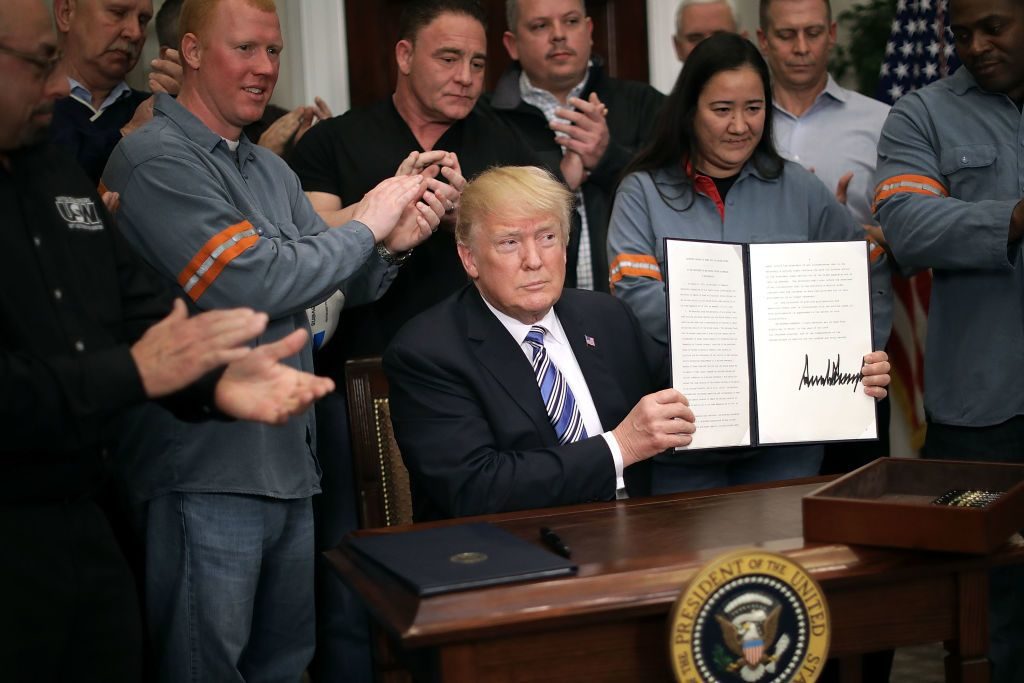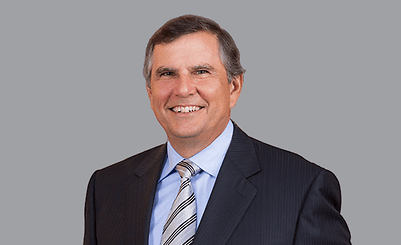 The Trump boom and tax cuts are working out for American manufacturers exactly in the way that factory CEOs hoped, planned – and worked hard – for, according to the CEO of the most influential and important association of manufacturers in the country.
The Trump boom and tax cuts are working out for American manufacturers exactly in the way that factory CEOs hoped, planned – and worked hard – for, according to the CEO of the most influential and important association of manufacturers in the country.
At the same time, David Farr, CEO of Emerson Electric and chairman of the National Association of Manufacturers, told Chief Executive that manufacturing CEOs are returning the favor by building and expanding factories, hiring more workers and raising wages and benefits, all of which is resulting in a virtuous cycle that will continue to fuel the U.S. economy for some time.
“In our most recent survey of members,” Farr says, “86 percent of them planned to increase their investments. And 77 percent planned to increase hiring. Also 72 percent already were planning to increase wages and benefits. My job [at NAM] is to make sure our members follow through on their commitments, and they are. We are executing. We are doing what we committed to do. We intend to keep our promises.”
 COME SEE DAVID FARR SPEAK AT OUR ANNUAL SMART MANUFACTURING SUMMIT— HELD THIS YEAR IN DALLAS, MAY 14-15. REGISTER HERE.
COME SEE DAVID FARR SPEAK AT OUR ANNUAL SMART MANUFACTURING SUMMIT— HELD THIS YEAR IN DALLAS, MAY 14-15. REGISTER HERE.Wage patterns at Ferguson, Missouri-based Emerson, a Fortune 500, diversified manufacturer, illustrate Farr’s point: Pay increased an average of 2.5 percent in 2016, by another 2.9 percent in 2017, and are on their way to increasing by an average of more than 3 percent this year. Plus, the company is boosting its contributions to bonuses and retirement funds and enhancing its family-leave program.
Trump’s election in 2016 signaled to NAM leadership and members that they could finally achieve some of their long-sought goals. “We were ready for the first administration in a long time that was ready to engage with NAM for meaningful input on tax reform, regulation and infrastructure,” Farr says. Previous NAM Chairman Gregg Sherrill “had put together a roadmap for how to attack this. We laid out an approach for increasing [manufacturers’] investment profile in the United States.”
Cue President Trump’s emphasis on domestic manufacturing. “We worked from day one with this administration, and the president pulled in a lot of CEOs” as well as Jay Timmons, president and CEO of the organization, and congresspersons “as to how to go about it,” Farr says. “We put forth a framework that they could support and we pushed it pretty hard, engaging our 12,000-plus member companies to engage with their local political organizations as well as coming to Washington.”
As a result, Farr says, “Manufacturing in the United States is clearly in a renaissance mode right now, and for the first time in a long time, Washington is basically focused on helping manufacturing, driven by the White House and members of Congress.”
To keep the current momentum going, Farr says, NAM is looking for the federal government to help in two more ways: pass immigration reform and a significant infrastructure program. He believes the chances of either are basically nil before this fall’s mid-term elections, but the manufacturers’ group intends to press hard on those two priorities right after.
Farr also says that Washington could help more with another pressing need for America’s factories: getting enough qualified workers. An unprecedented labor squeeze is the unfortunate flip side of today’s booming economy, and even if it eases, over the longer term U.S. manufacturers are going to need legions more workers with greater skill levels than factory workers traditionally have had.
“We need to upgrade the workforce for the next generation or we’re going to have a problem,” Farr says.
One idea would be more widespread and rapid adoption of the German model of apprenticeships for teenagers and a better way to move more of them into skilled-blue collar jobs and trades.
“The German model has ben very successful, and we have a different version of it in the U.S.,” Farr says. “But we need to figure out how to upgrade our version and get manufacturing companies even more engaged in it, and use the bully pulpit of Washington and the White House to make sure we drive it at the local level.”
Read more: U.S. Manufacturers Continue To See Strong Growth In 2018

Chief Executive Group exists to improve the performance of U.S. CEOs, senior executives and public-company directors, helping you grow your companies, build your communities and strengthen society. Learn more at chiefexecutivegroup.com.
0

1:00 - 5:00 pm
Over 70% of Executives Surveyed Agree: Many Strategic Planning Efforts Lack Systematic Approach Tips for Enhancing Your Strategic Planning Process
Executives expressed frustration with their current strategic planning process. Issues include:
Steve Rutan and Denise Harrison have put together an afternoon workshop that will provide the tools you need to address these concerns. They have worked with hundreds of executives to develop a systematic approach that will enable your team to make better decisions during strategic planning. Steve and Denise will walk you through exercises for prioritizing your lists and steps that will reset and reinvigorate your process. This will be a hands-on workshop that will enable you to think about your business as you use the tools that are being presented. If you are ready for a Strategic Planning tune-up, select this workshop in your registration form. The additional fee of $695 will be added to your total.

2:00 - 5:00 pm
Female leaders face the same issues all leaders do, but they often face additional challenges too. In this peer session, we will facilitate a discussion of best practices and how to overcome common barriers to help women leaders be more effective within and outside their organizations.
Limited space available.

10:30 - 5:00 pm
General’s Retreat at Hermitage Golf Course
Sponsored by UBS
General’s Retreat, built in 1986 with architect Gary Roger Baird, has been voted the “Best Golf Course in Nashville” and is a “must play” when visiting the Nashville, Tennessee area. With the beautiful setting along the Cumberland River, golfers of all capabilities will thoroughly enjoy the golf, scenery and hospitality.
The golf outing fee includes transportation to and from the hotel, greens/cart fees, use of practice facilities, and boxed lunch. The bus will leave the hotel at 10:30 am for a noon shotgun start and return to the hotel after the cocktail reception following the completion of the round.